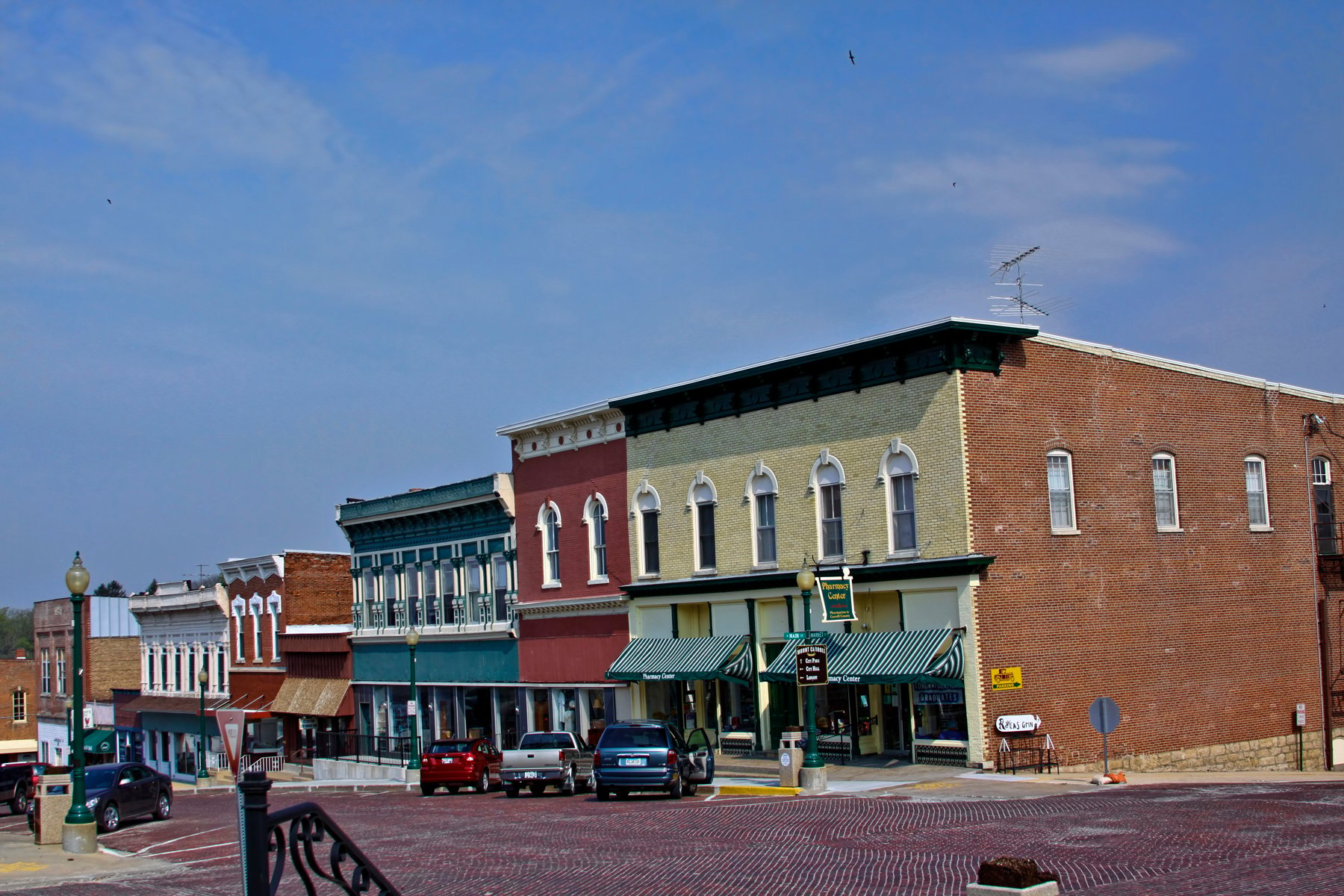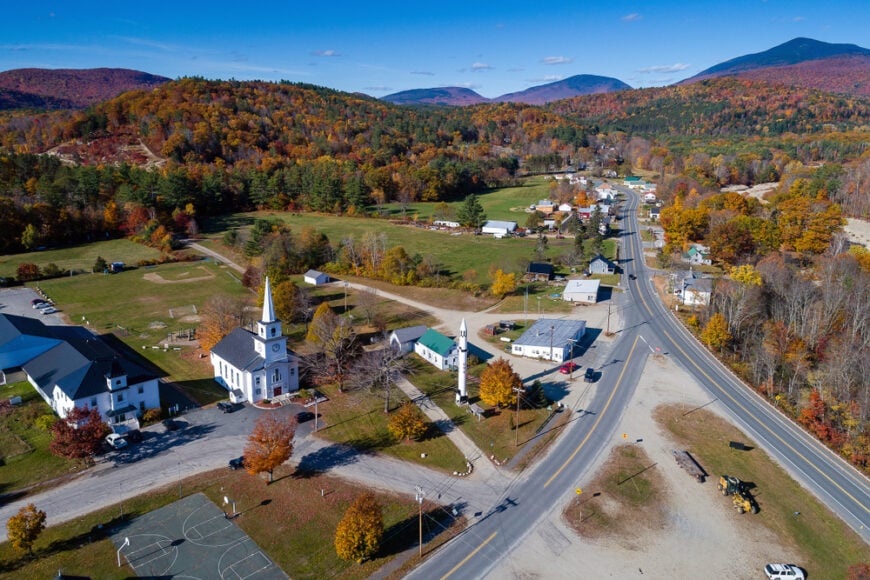
If you’re looking to escape the hustle and bustle of city life, Northwest New Hampshire offers some of the most secluded and peaceful towns I’ve ever had the pleasure of visiting.
Nestled among rolling hills, dense forests, and the majestic White Mountains, these hidden gems provide the perfect backdrop for a tranquil retreat. From historic charm to untouched natural beauty, each town has its own unique allure that beckons those seeking solitude and a connection with nature.
Join me as I count down my top 25 secluded towns in this picturesque region, uncovering the secrets that make each one a haven of serenity.
25. Haverhill: Seclusion Along the River
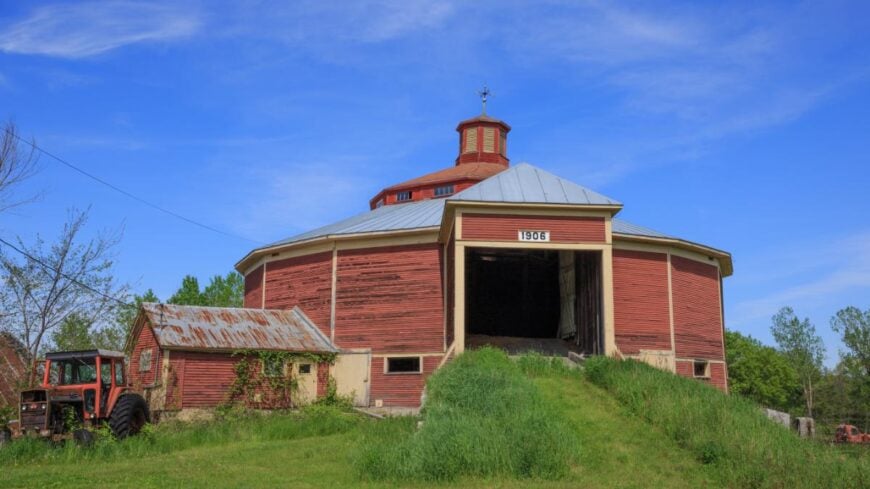
Haverhill, New Hampshire rests along the Connecticut River, where rolling farmland and wooded hills give it a feeling of seclusion. Founded in the 1760s, its history lingers in Federal- and Greek Revival–style homes and the preserved village of Haverhill Corner.
White-steepled churches, an old courthouse, and the town common recall its early role as a civic hub. Visitors can fish in the river, hike nearby trails, or take foliage drives that show off the area’s natural beauty.
Community gatherings and small festivals keep the town’s spirit close-knit. In Haverhill, the blend of history and quiet landscapes makes time feel unhurried, as if the past still walks beside the present.
Where is Haverhill?
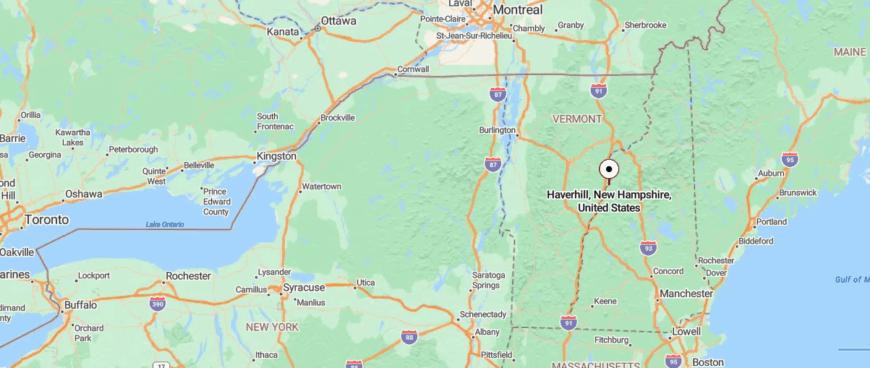
Haverhill, New Hampshire sits in Grafton County along the Connecticut River, right at the Vermont border. The town lies about 30 miles north of Hanover and is reached by traveling U.S. Route 302 or winding backroads that pass farmland and forest.
Its villages—like North Haverhill, Woodsville, and Haverhill Corner—carry layers of history in their old buildings and quiet streets. Surrounded by river valley views and mountain horizons, Haverhill feels like a step back into New England’s quieter rhythms.
24. Bath: A Covered Bridge Retreat
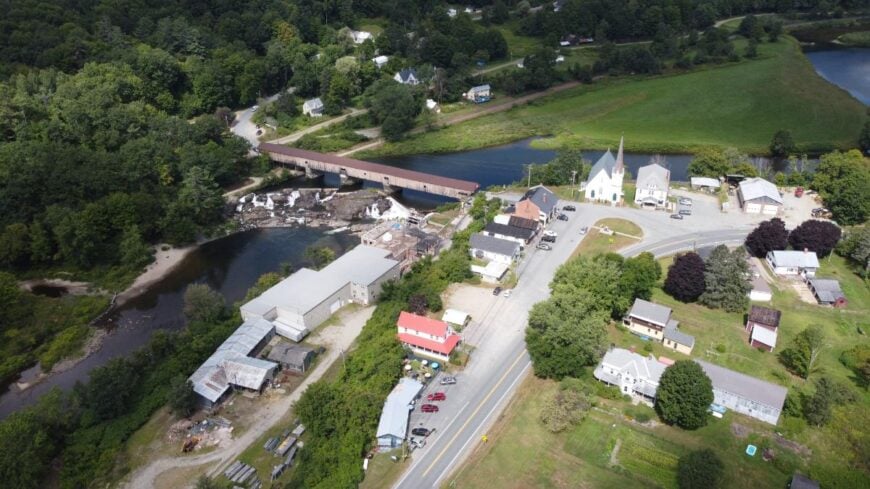
Bath, New Hampshire is tucked into the western hills of the state, where the Ammonoosuc River winds past covered bridges and waterfalls that keep it feeling hidden from the wider world. Its sense of seclusion comes from its size and history, with a village green, white-steepled church, and buildings that haven’t changed much in generations.
The Bath-Haverhill Covered Bridge and Bath’s historic Brick Store—one of the oldest general stores in America—anchor the charm of its small center. Visitors come to see the covered bridges, wander along the river, or pause at the general store for local goods and stories.
The sound of rushing water and the sight of autumn leaves make the place feel like a painting come to life. In Bath, seclusion feels less like distance and more like stepping gently into another time.
Where is Bath?
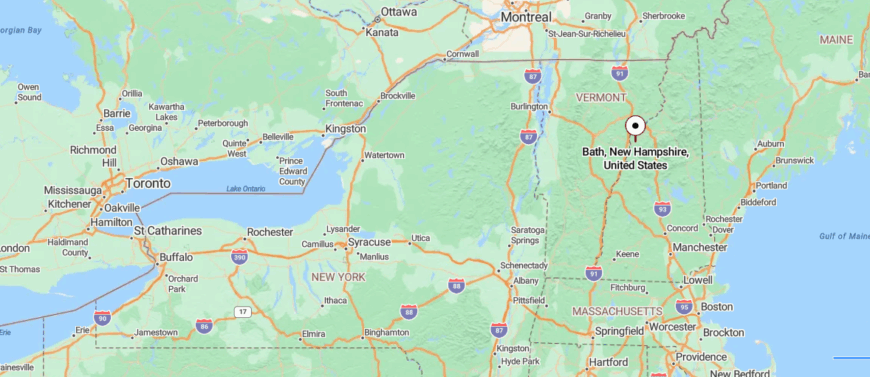
Bath, New Hampshire rests in the western part of Grafton County, tucked along the Ammonoosuc River near the Vermont border. It is about 30 miles north of Hanover and reached by U.S. Route 302, a drive that winds through forested hills and farmland.
The town is best known for its historic covered bridges and old village center, which still echo its 18th-century roots. With river views and mountain backdrops, Bath feels quietly preserved, as though time lingers a little longer there.
23. Lisbon: Secluded Valley Living
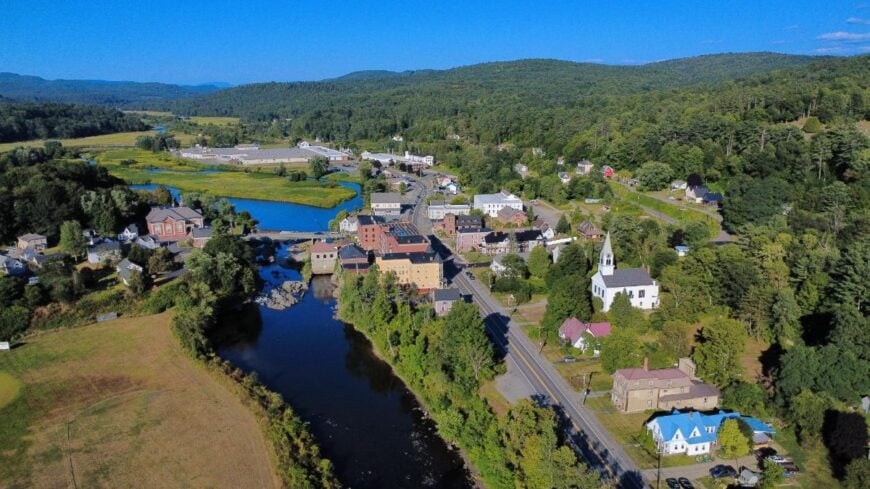
Lisbon, New Hampshire rests in the quiet of the White Mountains’ foothills, where the Ammonoosuc River bends and shields it from the pace of larger towns. Once known for its thriving paper mills and later for its role in the early days of the copper industry, traces of that industrious past remain in brick buildings and old mill sites.
Today, the streets are calm, with small shops and homes that reflect the resilience of a community that has weathered time. Visitors can explore riverbanks, drive scenic mountain roads, or enjoy autumn fairs that bring neighbors together.
The nearby hills invite hiking and quiet reflection, with views that seem untouched by change. Lisbon feels like a place where history and landscape join to create a seclusion that is both grounding and gentle.
Where is Lisbon?
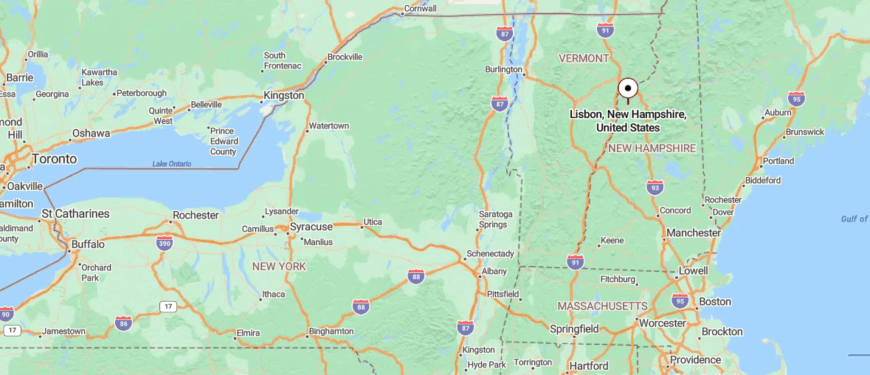
Lisbon, New Hampshire sits in the western White Mountains along the banks of the Ammonoosuc River. The town is about 20 miles north of Franconia Notch, reached by following U.S. Route 302 as it winds through forested valleys and past old mill towns.
Once a center for textile and wood industries, Lisbon still carries traces of its past in its village streets and riverside setting. Surrounded by hills and flowing water, it feels both rooted in history and tucked away from the rush of the world.
22. Littleton: Hidden Corners Beyond the Center
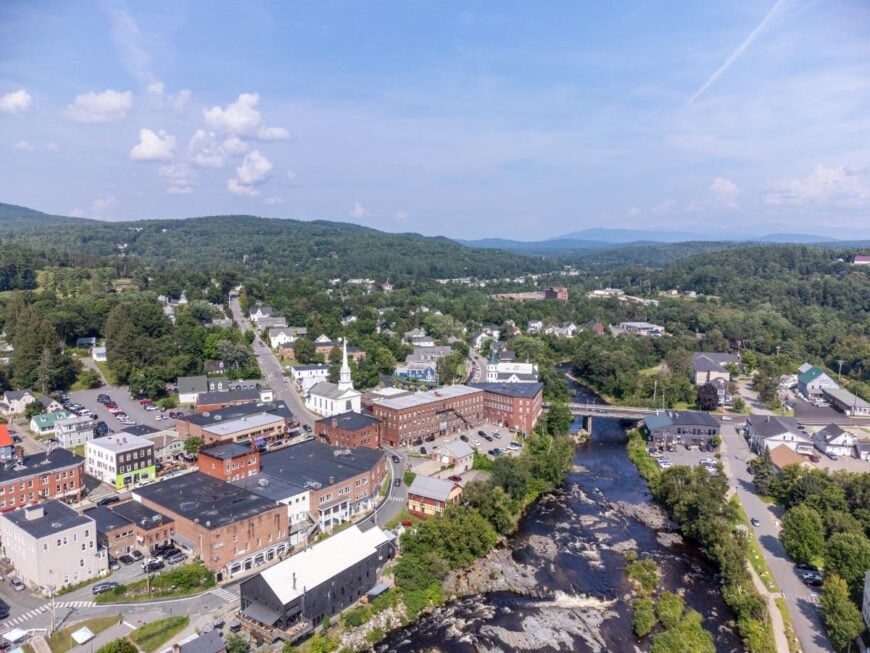
Littleton, New Hampshire sits along the Ammonoosuc River at the edge of the White Mountains, where the backdrop of peaks and forests gives it a tucked-away feel despite its lively Main Street. Once a mill town, its historic brick buildings now hold cafés, shops, and galleries that blend old character with modern charm.
The Riverwalk offers a quiet stroll beside rushing water, while the iconic covered bridge connects visitors to the town’s scenic heart. Outdoor adventures are never far—hiking in Franconia Notch, paddling the river, or leaf-peeping in the fall draw both locals and travelers.
Festivals and music on the Main Street stage fill the air with energy, yet a step away from the bustle the hills wrap the place in calm. In Littleton, seclusion feels like a balance—alive with community spirit, but always sheltered by the mountains’ steady embrace.
Where is Littleton?
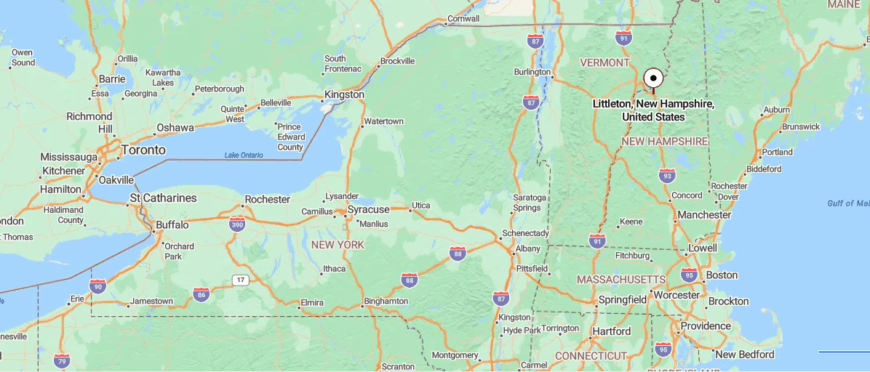
Littleton, New Hampshire rests in the White Mountains region, perched along the Ammonoosuc River in Grafton County. It is about 15 miles north of Franconia Notch and reached by Interstate 93 or U.S. Route 302, routes that wind past mountain ridges and deep valleys.
The town’s historic Main Street, lined with brick buildings and small shops, reflects its long-standing role as a regional hub. With mountains rising nearby and the river running through, Littleton balances accessibility with a sense of mountain seclusion.
21. Franconia: Mountain Quietude
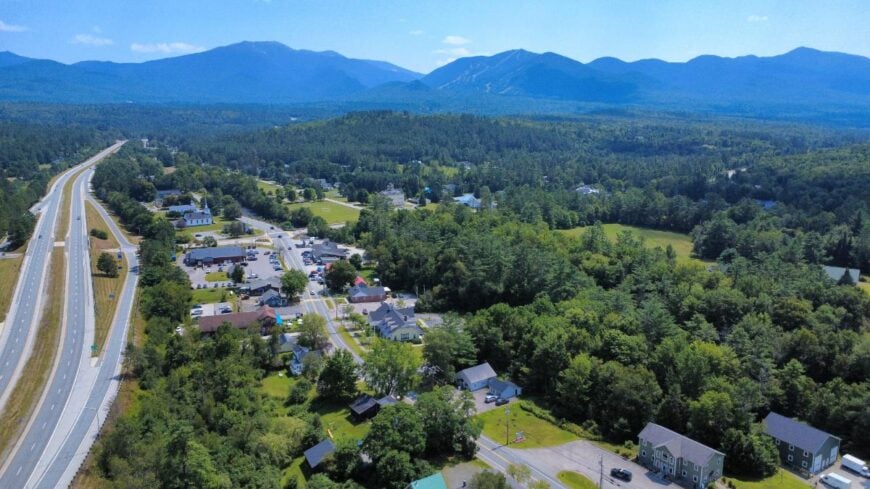
Franconia, New Hampshire lies cradled by the White Mountains, its seclusion shaped by towering peaks and winding roads that keep it quietly apart. The village feels timeless, with its cluster of homes, inns, and shops resting in the shadow of Franconia Notch.
Nature defines its rhythm—Echo Lake, the Basin, and Cannon Mountain offering trails, waters, and slopes that shift with each season. History lingers too, as the home of poet Robert Frost, whose words still seem to echo through the fields and stone walls.
Visitors hike the rugged trails, ski in winter, or simply pause to watch clouds drift across the mountain ridges. Franconia carries the kind of quiet that feels both vast and intimate, a reminder of how the land itself can hold you in stillness.
Where is Franconia?
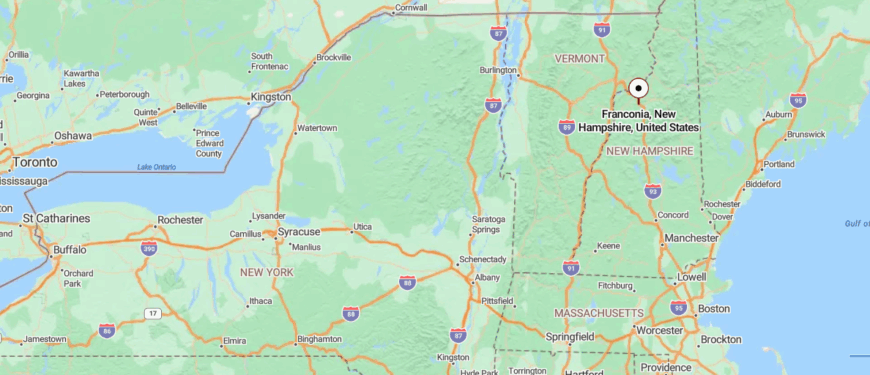
Franconia, New Hampshire lies in the heart of the White Mountains, set against the backdrop of Franconia Notch. The town is about 80 miles north of Concord and reached by Interstate 93, which narrows into a scenic pass between towering cliffs and forested slopes.
Its small center holds traces of its history as a mountain village while serving as a gateway to outdoor trails and alpine scenery. With peaks rising on all sides, Franconia feels cradled by the mountains, quietly apart from the wider world.
20. Sugar Hill: Scenic Solitude
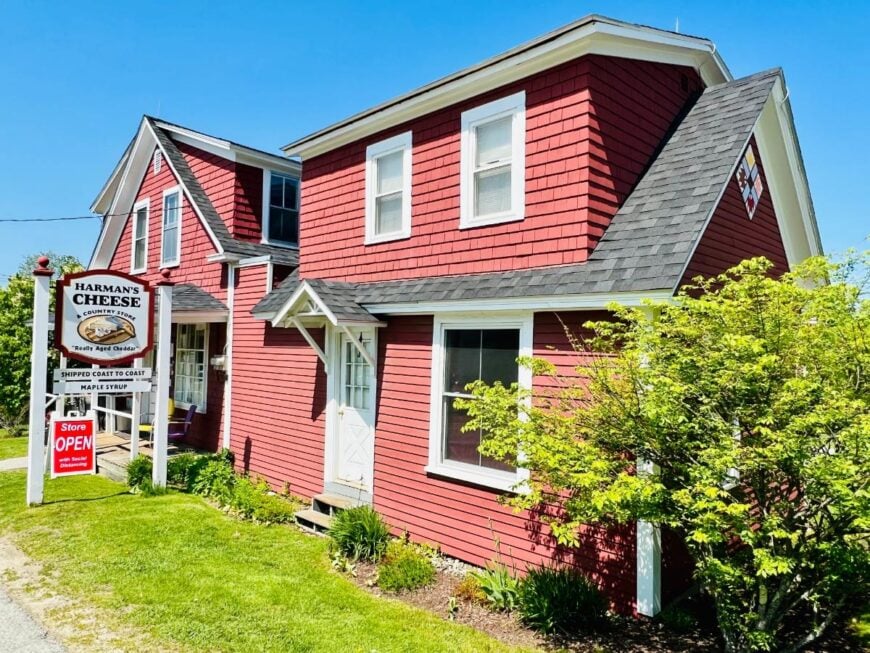
Sugar Hill, New Hampshire sits high above the valley, its quiet perch offering sweeping views of the White Mountains that make it feel like a hidden lookout on the world. The town is best known for its fields of lupines that bloom each June, painting the hillsides in purple and pink as if nature itself were celebrating its seclusion.
Life here moves gently, with historic inns, family farms, and winding roads that open into vistas of Mount Washington and Franconia Notch. Visitors come for the Lupine Festival, for maple treats at Polly’s Pancake Parlor, or for simple drives that turn every bend into a postcard.
Evenings settle softly, with sunsets stretching wide across open fields and starry skies unspoiled by city lights. In Sugar Hill, the quiet feels expansive, like a secret shared between the mountains and the sky.
Where is Sugar Hill?
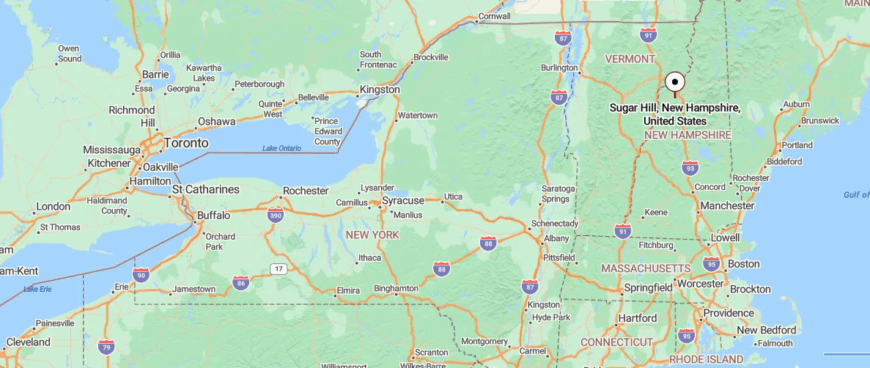
Sugar Hill, New Hampshire sits high on a ridge in Grafton County, overlooking the White Mountains with sweeping views in every direction. Located about 90 miles north of Concord, it’s reached by winding backroads branching from Interstate 93 and U.S. Route 302.
The town is best known for its open meadows and June lupine blooms, which blanket the hillsides in color. Perched above the valleys, Sugar Hill feels airy and apart, as though it was placed to watch the mountains from a quiet distance.
19. Bethlehem: Hidden Retreats in the Pines
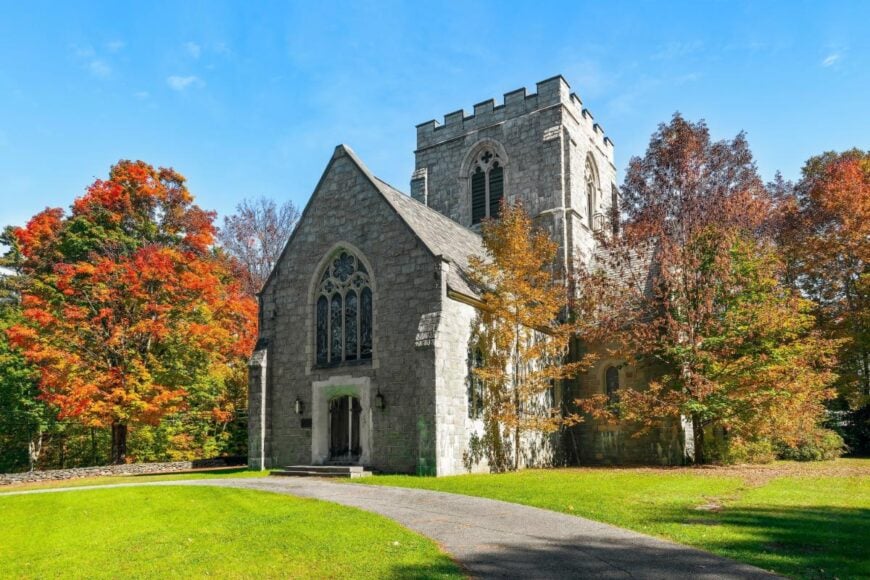
Bethlehem, New Hampshire rests in the northern mountains, where cool breezes and winding roads make it feel tucked away in its own highland world. Once a grand summer resort town, its wide streets and old hotels still whisper of a past filled with carriages and mountain travelers.
Today, it blends that history with an artsy, welcoming spirit—galleries, music venues, and small cafés giving it a creative heartbeat. Visitors hike nearby trails, play a round at one of the oldest golf courses in the country, or take in mountain views that stretch endlessly.
The air feels crisp, even in summer, carrying the scent of pine and woodsmoke. Bethlehem’s seclusion isn’t just in its geography, but in the way it invites you to linger, as if time itself has slowed at the mountain’s edge.
Where is Bethlehem?
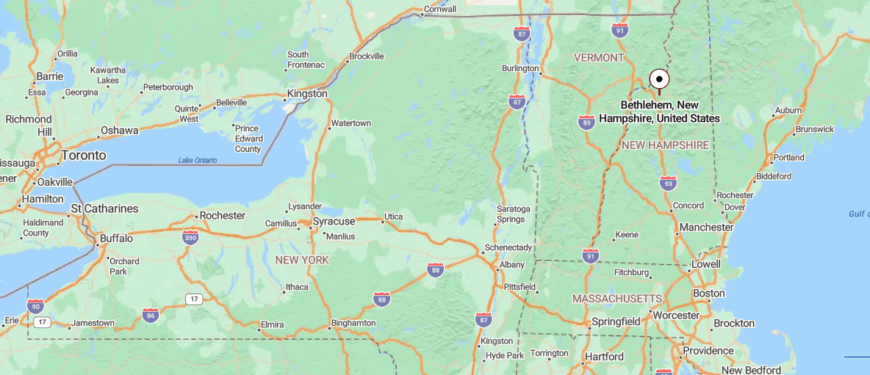
Bethlehem, New Hampshire rests in the northern White Mountains, nestled along U.S. Route 302 about 15 miles northwest of Franconia Notch. Once a summer retreat for visitors escaping the cities, the town still carries that mountain-resort air with its broad streets and historic inns.
The drive into Bethlehem climbs gently, with forested slopes giving way to open views of the Presidential Range. Set high in the hills, it feels both welcoming and removed, a mountain town that holds the quiet of its elevation.
18. Monroe: Quiet Riverside Living

Monroe, New Hampshire lies along a quiet bend of the Connecticut River, where farmland meets wooded hills and the pace of life feels far removed from the world beyond. Its small size and riverside setting give it a kind of hidden calm, with winding backroads that seem to lead only to silence and sky.
The village is modest, yet marked by neighborly ties and traditions that have lasted for generations. Visitors can wander to the river’s edge for fishing, take scenic drives through the surrounding hills, or enjoy the autumn colors that sweep across the valley.
Evenings bring the sound of crickets and the glow of porch lights instead of city noise. In Monroe, seclusion feels like a gentle pause, a reminder that the simplest places often hold the deepest quiet.
Where is Monroe?
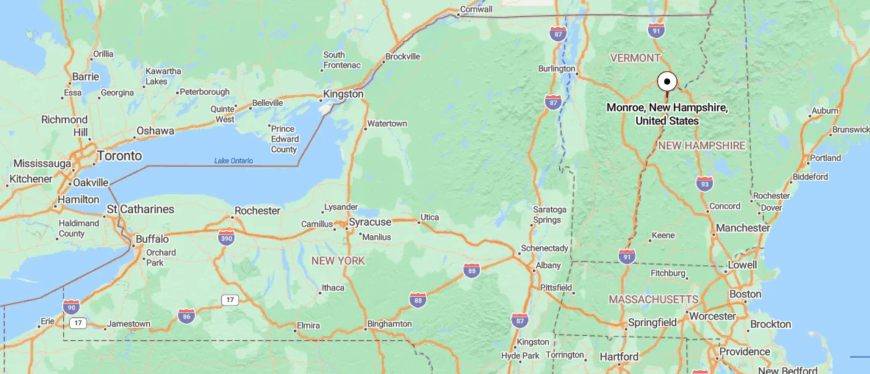
Monroe, New Hampshire lies along the Connecticut River in Grafton County, tucked against the Vermont border. It sits about 40 miles north of Hanover and is reached by smaller state routes that wind past farmland and wooded valleys before narrowing toward the river.
The town itself is modest, with quiet roads that lead down to broad river views and open fields. Surrounded by water and hills, Monroe feels gently sheltered, a riverside place set apart from busier paths.
17. Rumney: Gateway to Quiet Wilderness
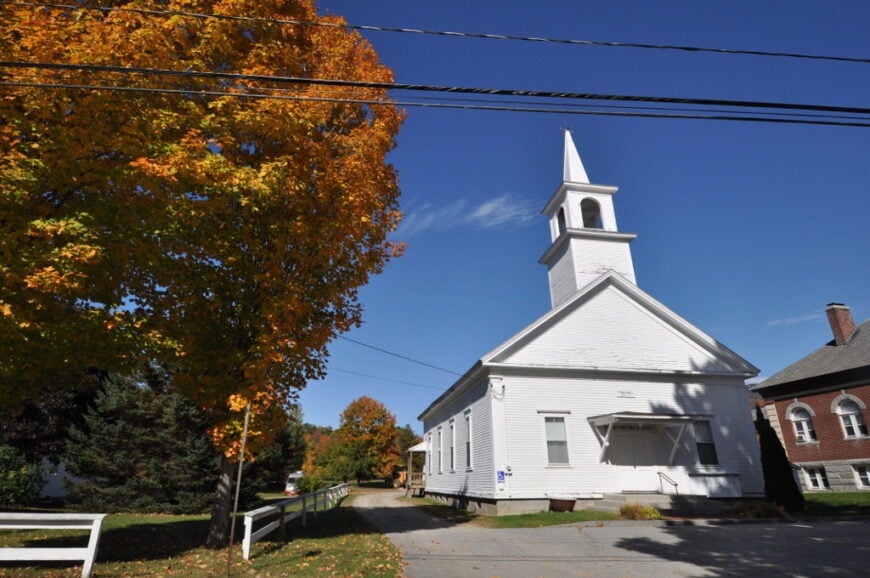
Rumney, New Hampshire nestles at the edge of the White Mountains, where sheer cliffs and forested slopes create a sense of being held apart from the wider world. The town is best known for Rumney Rocks, a granite playground that draws climbers from far and wide, yet even with visitors.
Life here balances adventure and calm—trails weave through woods, streams cut across meadows, and backroads lead to views that seem endless. Visitors hike Rattlesnake Mountain, paddle the Pemigewasset River, or camp beneath skies filled with stars.
Old farmhouses and rustic inns give the village a sense of history that softens its wild edges. Rumney’s seclusion lies in this harmony, where rugged cliffs and quiet valleys remind you how small and steady life can feel in the mountains.
Where is Rumney?
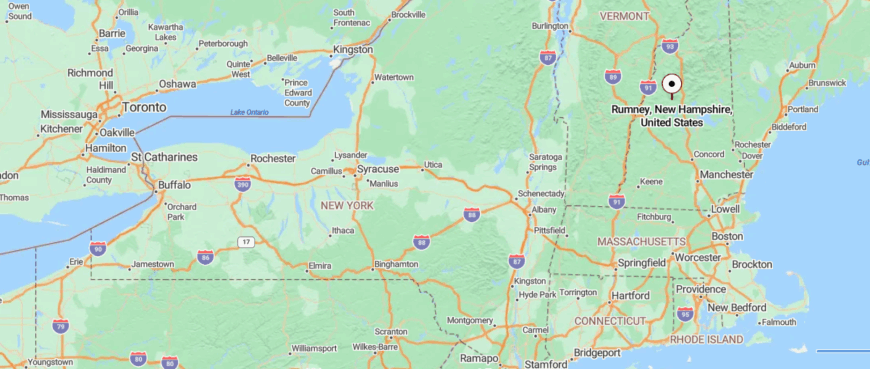
Rumney, New Hampshire sits in Grafton County at the southern edge of the White Mountains, just west of Plymouth. It is about 50 miles north of Concord and reached by U.S. Route 25, a road that follows the valleys and bends of the Baker River.
Known for its dramatic cliffs, the area draws climbers and hikers while the village itself remains small and quiet. With mountains rising above and the river threading through, Rumney feels like a gateway where wilderness brushes close to everyday life.
16. Woodstock: Nature’s Refuge
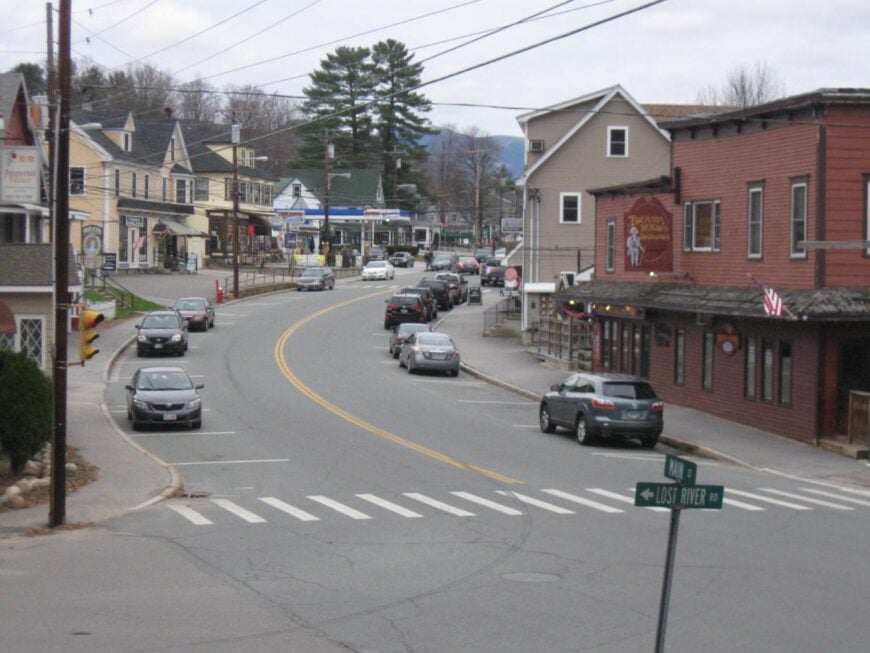
Woodstock, New Hampshire sits where the Pemigewasset River winds through the White Mountains, giving it a tucked-away feel even though it rests near the gateway to Franconia Notch. The village hums with a lively spirit—breweries, inns, and shops lining Main Street.
History lingers in old railroad ties and timber traditions, still echoed in the sturdy buildings that frame the town. Visitors hike the notch, chase waterfalls, or linger by the river where the sound of rushing water fills the air.
Festivals and summer nights on the green bring neighbors and travelers together under mountain skies. In Woodstock, seclusion is less about solitude and more about finding a pocket where community and wilderness meet in perfect balance.
Where is Woodstock?
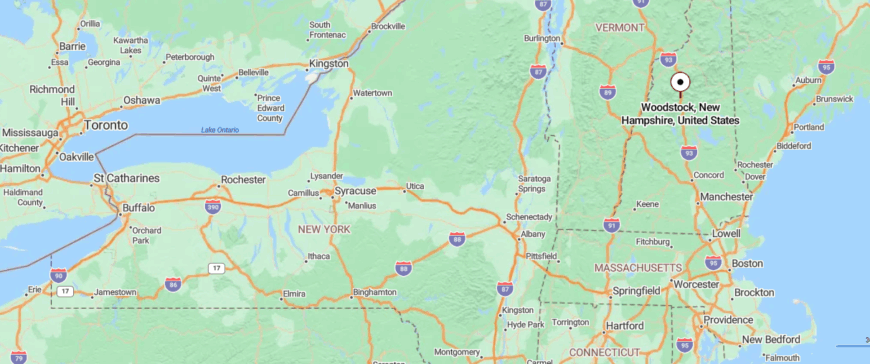
Woodstock, New Hampshire rests along the Pemigewasset River in the western White Mountains, just south of Franconia Notch. The town is about 70 miles north of Concord and reached by Interstate 93, where the highway narrows into winding mountain stretches.
Its small center blends old inns, local shops, and river views, making it both a stopping point and a quiet retreat. Framed by forested ridges and rushing water, Woodstock carries the feeling of a mountain town both accessible and tucked away.
15. Lincoln: Mountain Seclusion Despite Popularity

Lincoln, New Hampshire is cradled in the heart of the White Mountains, its seclusion shaped by high peaks and dense forests that press close on every side. Once a thriving mill town, its history still lingers in sturdy brick buildings even as it has become a gateway to wilderness.
Adventure surrounds it—Franconia Notch State Park, the Flume Gorge, and the Kancamagus Highway all begin within reach, offering trails, waterfalls, and sweeping vistas. In winter, skiers carve down the slopes of Loon Mountain, while summer brings hikers and leaf-peepers chasing color along the ridgelines.
Despite these bursts of activity, evenings in Lincoln return to a quieter rhythm, with the river whispering through town and stars filling the mountain sky. Here, the seclusion lies not in distance, but in the way the mountains themselves seem to fold the town into their embrace.
Where is Lincoln?
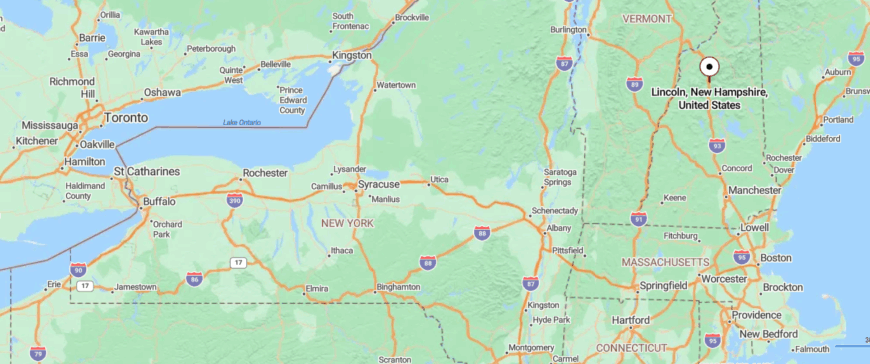
Lincoln, New Hampshire lies at the base of the White Mountains, directly at the southern entrance to Franconia Notch. About 70 miles north of Concord, it’s reached by Interstate 93, which threads through the Pemigewasset River valley before narrowing into the notch itself.
Once a mill town, Lincoln now serves as a hub for hikers, skiers, and travelers moving deeper into the mountains. With steep peaks rising overhead and forest pressing close, it feels like the threshold where the settled world gives way to wilderness.
14. Thornton: Quiet Living Between Valleys

Thornton, New Hampshire stretches quietly along the Pemigewasset River, where winding backroads and thick forests create the feeling of a town tucked between mountains and sky. Its seclusion comes from the way ridges and valleys fold around it.
Old farmhouses and country inns dot the landscape, reminders of a history tied to the land and its steady rhythm. Visitors can hike the trails of Welch and Dickey, drift down the river in summer, or explore the quiet woodlands that blaze with color each autumn.
Life here moves gently, with community gatherings and the natural world setting the pace. Thornton leaves you with the sense that the mountains don’t just surround it—they hold it close.
Where is Thornton?
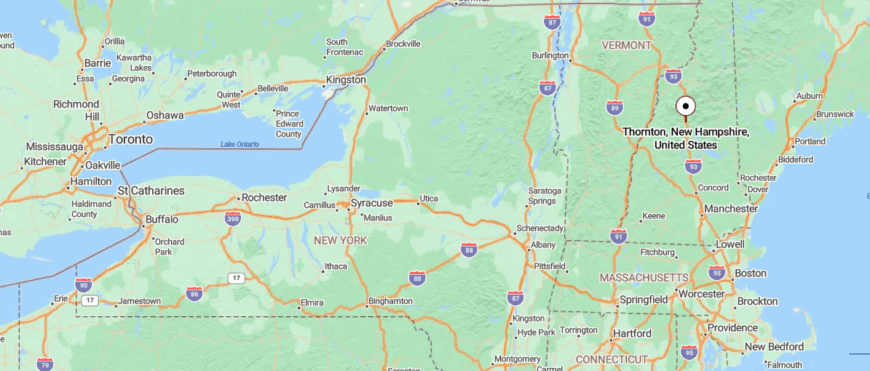
Thornton, New Hampshire stretches along the Pemigewasset River in Grafton County, set just south of the White Mountain National Forest. It is about 60 miles north of Concord and reached by Interstate 93, which curves through valleys and low ridges before opening into quieter backroads.
The town is spread out, with small clusters of homes and winding lanes tucked between forest and farmland. Surrounded by mountain slopes and open river flats, Thornton feels like a wide, quiet pause before the high peaks begin.
13. Campton: A Forested Escape

Campton, New Hampshire rests at the edge of the White Mountains, where covered bridges and winding country roads give it a feeling of being tucked back in time. Its quiet valleys and wooded hillsides create a natural barrier, softening the sounds of the wider world.
The sense of history lingers in its old homesteads and the iconic Blair Bridge, while community ties remain strong in village centers. Visitors can hike nearby trails, paddle the Pemigewasset River, or take scenic drives that reveal endless mountain views.
Autumn paints the hillsides in fiery tones, and winter brings a stillness broken only by the crunch of snow underfoot. In Campton, seclusion feels like a gift, offering a rhythm as steady and grounding as the land itself.
Where is Campton?
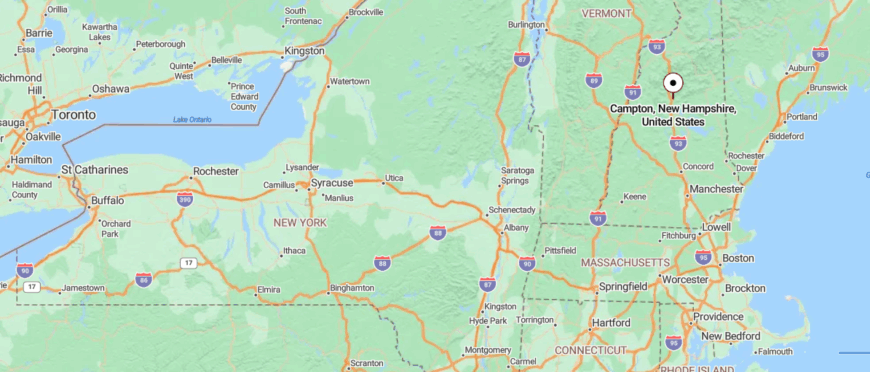
Campton, New Hampshire rests in the foothills of the White Mountains, just north of Plymouth in Grafton County. It is about 55 miles north of Concord and reached by Interstate 93, where the highway rises gently into wooded hills and river valleys.
The community is dotted with old farmsteads and covered bridges, giving it the feel of a town shaped by both history and landscape. With mountains close by yet a sense of openness around it, Campton feels like the first step into the high country.
12. Plymouth: Hidden Corners Beyond the College Town
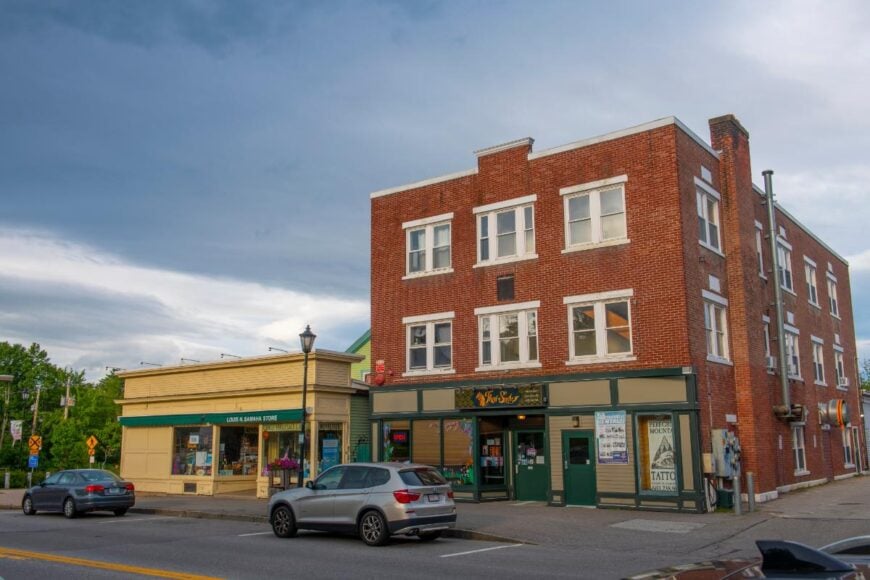
Plymouth, New Hampshire rests in a valley where the Pemigewasset River winds past wooded hills, giving it a sheltered feeling even as a college town. Plymouth State University adds a youthful energy, yet beyond campus the pace softens into quiet neighborhoods and country roads.
History shows in the old rail lines, the town common, and buildings that recall its 19th-century roots. Visitors can catch a performance at the Silver Center, kayak the river, or head into the nearby White Mountains for hiking and skiing.
The blend of student life, small-town traditions, and mountain landscapes creates a rhythm both lively and grounded. In Plymouth, seclusion comes not from remoteness but from the way the hills cradle the town, holding it apart just enough to feel like its own world.
Where is Plymouth?
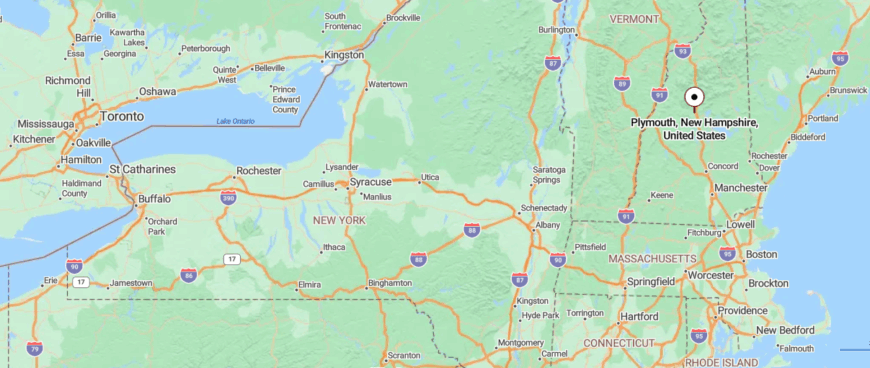
Plymouth, New Hampshire sits in Grafton County at the meeting point of the Pemigewasset and Baker Rivers, right at the edge of the White Mountains. About 45 miles north of Concord, it’s reached by Interstate 93, which brings travelers through wooded valleys before opening into the town’s broad main streets.
Home to Plymouth State University, the town blends its role as a regional hub with the feel of a small mountain community. With ridges rising nearby and rivers flowing through, Plymouth feels both connected and quietly set apart.
11. Ashland: Small Town Privacy Near the Lake
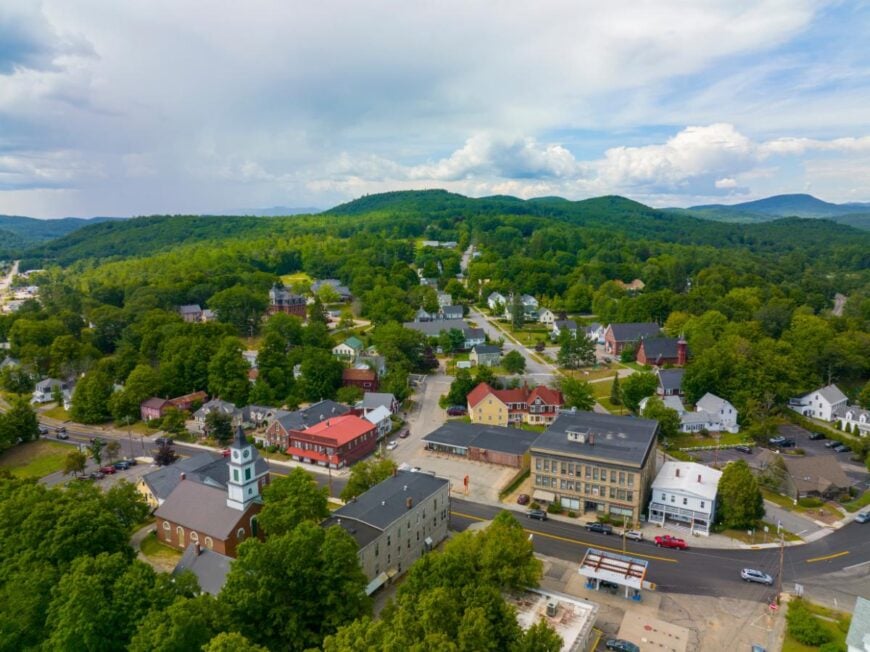
Ashland, New Hampshire rests along the Squam River, where the hum of water over old mill dams still shapes the quiet atmosphere of the village. Once a bustling mill town, its history lingers in brick buildings and narrow streets, though today the pace has slowed to something gentler.
Surrounded by wooded hills and just steps from Squam Lake, it feels sheltered, almost hidden, despite its central location. Visitors can wander past historic mill sites, paddle the lake, or take scenic drives into the White Mountains that rise nearby.
The seasons leave their mark here—brilliant foliage in autumn, soft snows in winter, and riverside blooms in spring. In Ashland, seclusion is found not in distance, but in the way the river and hills create a world apart.
Where is Ashland?

Ashland, New Hampshire rests at the southern edge of Grafton County, where the Pemigewasset River flows out of the White Mountains into Squam Lake. The town is about 40 miles north of Concord and reached by Interstate 93, with local roads curving toward the lake and village center.
Once a mill town, it still carries traces of its industrial past alongside its small, walkable streets. With water on one side and mountains on the other, Ashland feels like a place balanced between history and quiet escape.
10. Orford: Historic Town with Secluded Charm
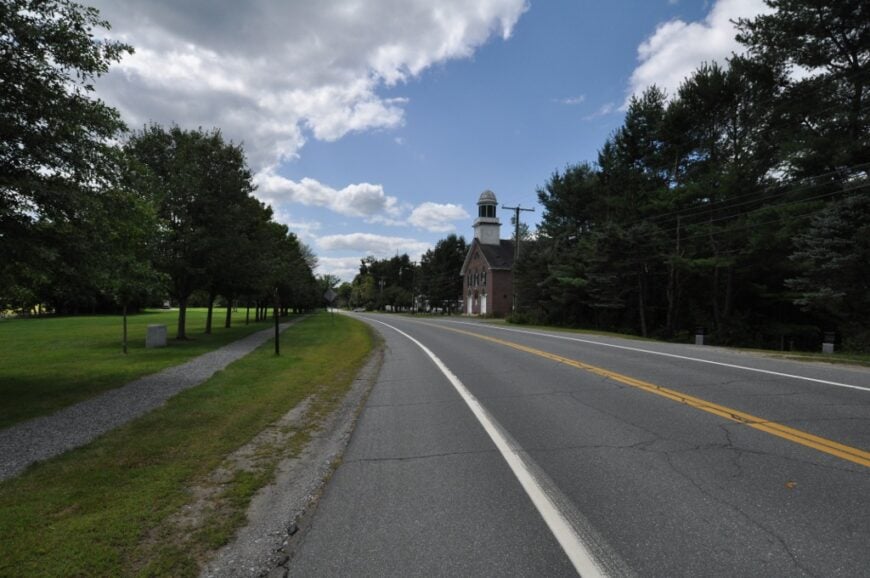
Orford, with a population of around 1,200, is a quaint town that exudes historic charm and tranquility. I love strolling along its streets lined with beautifully preserved 19th-century homes, known as the “Orford Ridge.”
Outdoor enthusiasts can enjoy hiking trails, including the Ridge Trail, and fishing in the Connecticut River. While the town doesn’t have major industries, its economy is supported by small local businesses and agriculture.
What makes Orford truly secluded is its expansive natural areas and low population density, offering a peaceful retreat away from crowded tourist spots.
Where is Orford?
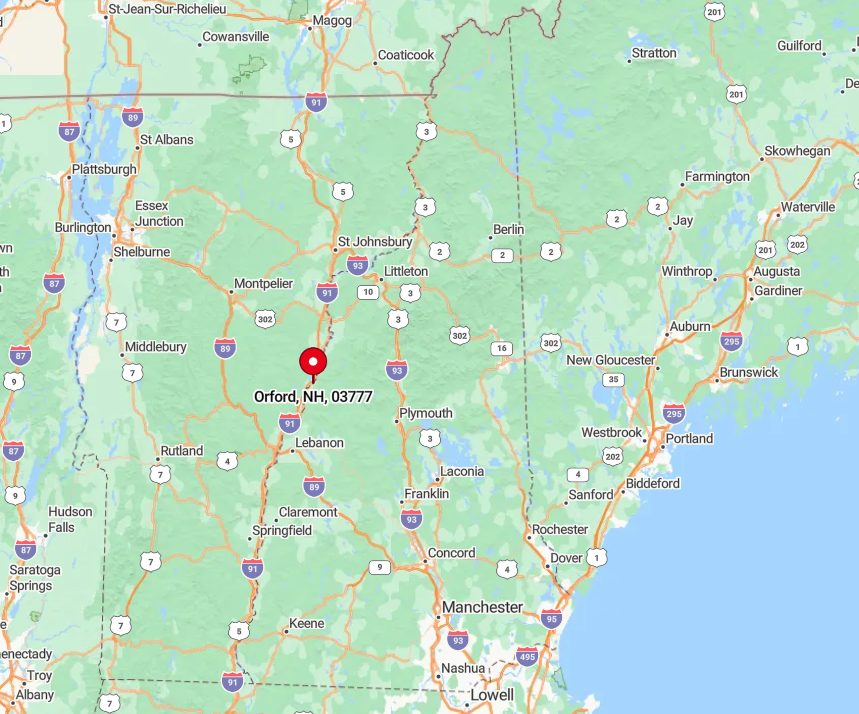
Orford is located in Grafton County, along the eastern banks of the Connecticut River, right on the border with Vermont. Its seclusion is enhanced by the surrounding forests and the absence of major highways passing through town.
To get there, I usually take Route 10, which meanders through scenic countryside, making the journey as enjoyable as the destination itself. The town’s remote location and the surrounding natural beauty make Orford a peaceful escape from the fast pace of urban life.
9. Wentworth: Secluded Countryside Living
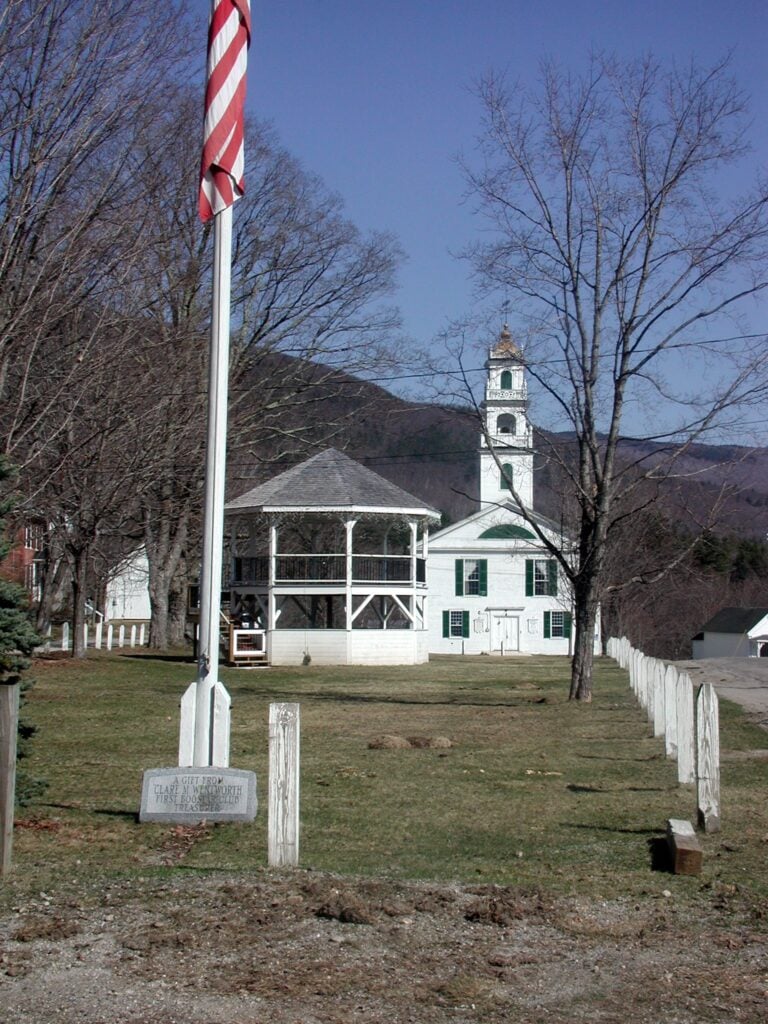
Wentworth is a small town with a population of just over 900 residents. The town is a haven for those who appreciate the great outdoors, offering activities like hiking on Mount Carr Mountain and exploring the Baker River.
Wentworth doesn’t have significant industries, but local crafts and small-scale farming contribute to its economy. The town’s low housing density and large properties provide a quiet, private lifestyle that I find incredibly refreshing. Its distance from urban centers ensures that Wentworth remains a peaceful enclave.
Where is Wentworth?
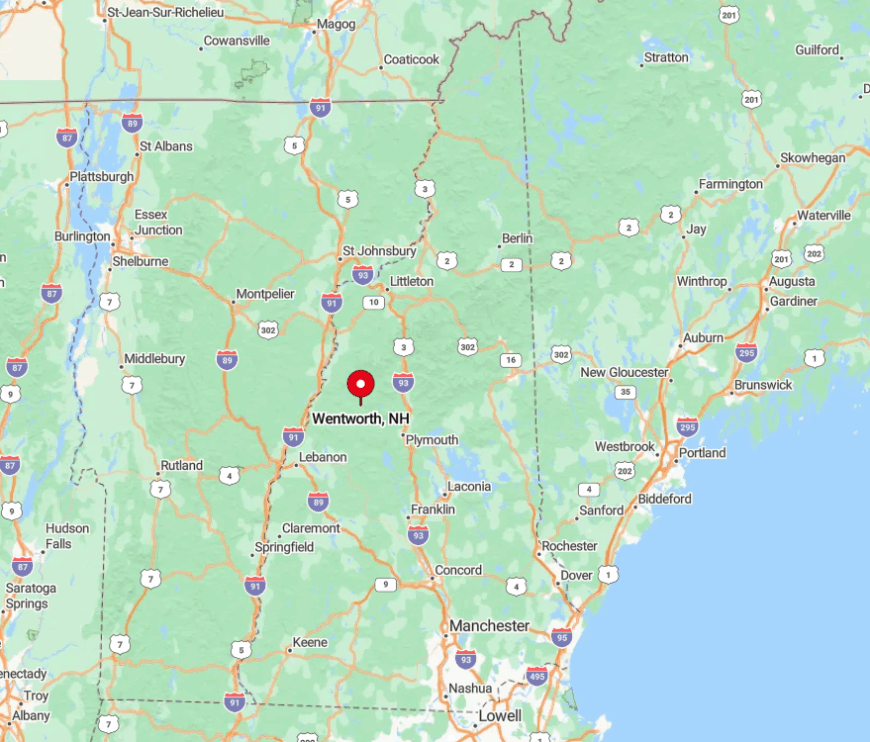
Nestled in Grafton County, Wentworth is situated along Route 25, east of Rumney and west of Warren. Its seclusion comes from being surrounded by expansive forests and the White Mountain National Forest to the north.
Getting there involves a scenic drive through rolling hills and dense woodlands, which always makes me feel like I’m leaving the rest of the world behind. The town’s rural setting and natural barriers contribute to its quiet atmosphere.
8. Dorchester: Vast Wilderness and Open Space
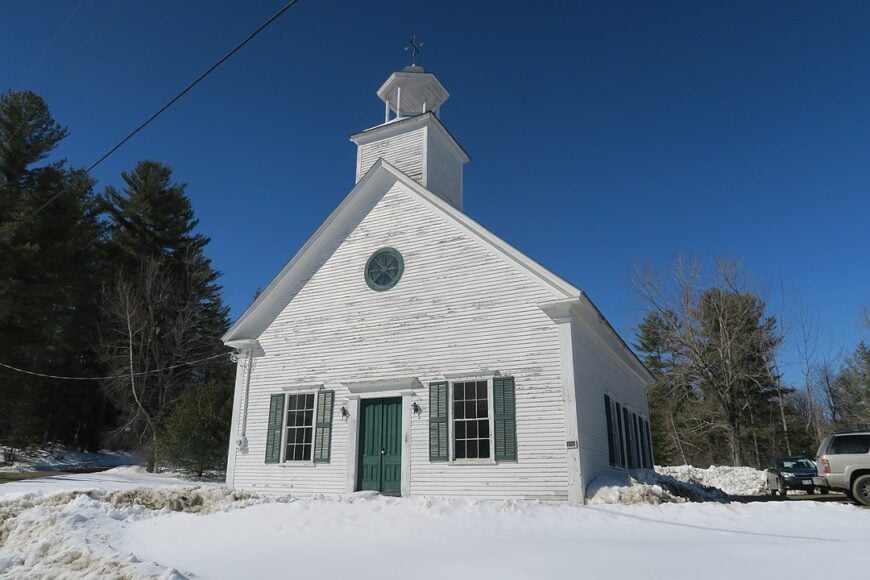
Dorchester is a tiny community with a population of around 350 people. The town is a paradise for nature lovers like me, offering vast undeveloped land perfect for hiking, wildlife watching, and simply enjoying the serenity of the wilderness.
There are no major industries here, and the economy relies on small-scale forestry and agriculture. The extensive natural features, including forests and mountains, create a secluded and serene environment that’s hard to find elsewhere.
Where is Dorchester?
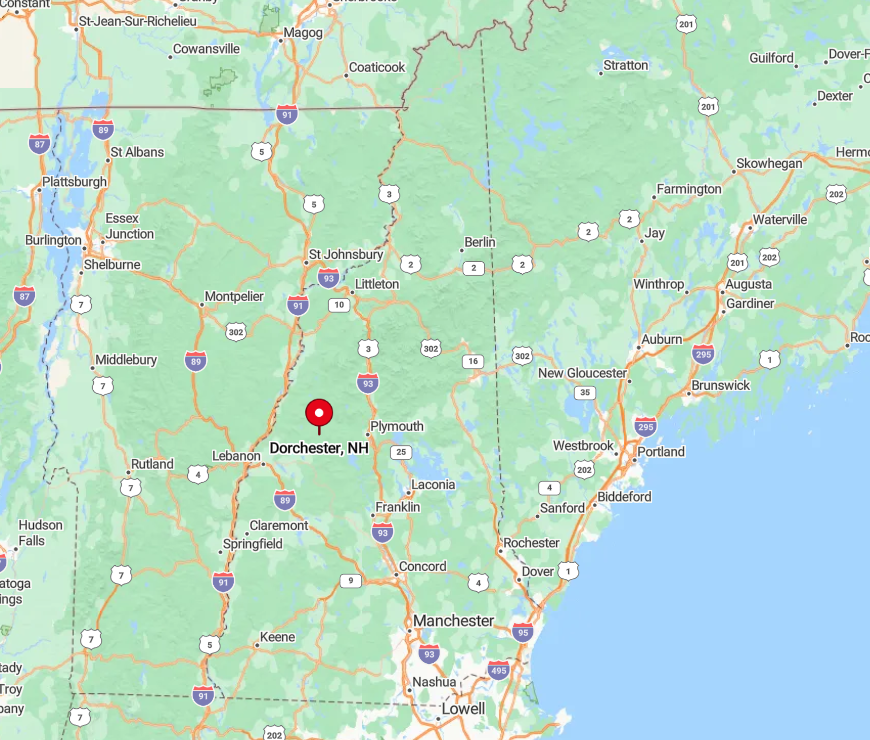
Located in Grafton County, Dorchester lies southeast of Lyme and north of Canaan. Its remoteness is accentuated by limited road access and the surrounding wilderness areas.
I often take the less-traveled local roads that wind through the woods to reach this hidden gem. The town’s vast undeveloped land and natural barriers make it one of the most secluded places in Northwest New Hampshire.
7. Piermont: A Quiet Haven by the Connecticut River
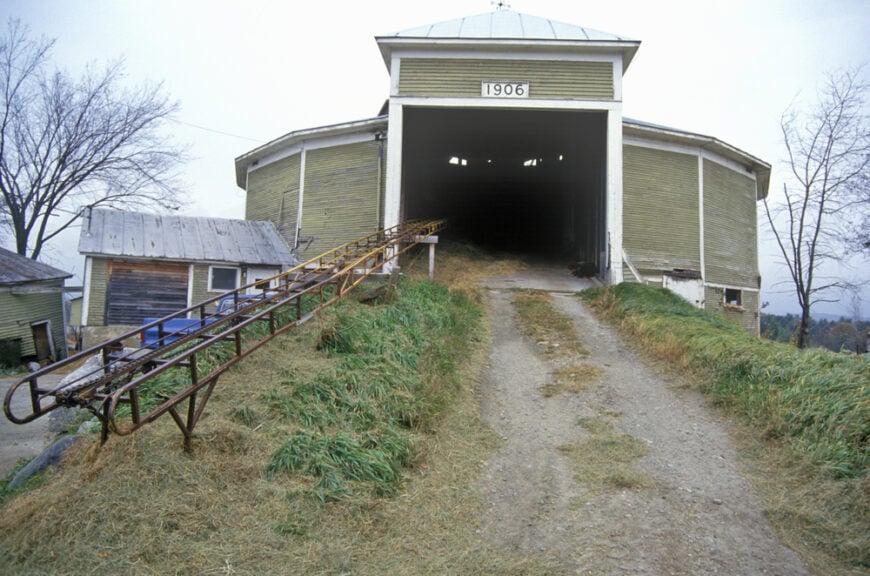
Piermont, home to about 800 residents, is a peaceful town nestled along the Connecticut River. I enjoy spending time by the water, kayaking, or picnicking on its banks.
The town has a few small businesses and farms, but no significant industrial activity, which adds to its quiet charm. Large acreages and natural landscapes, far removed from commercial zones and high-density areas, make Piermont a tranquil retreat.
Where is Piermont?
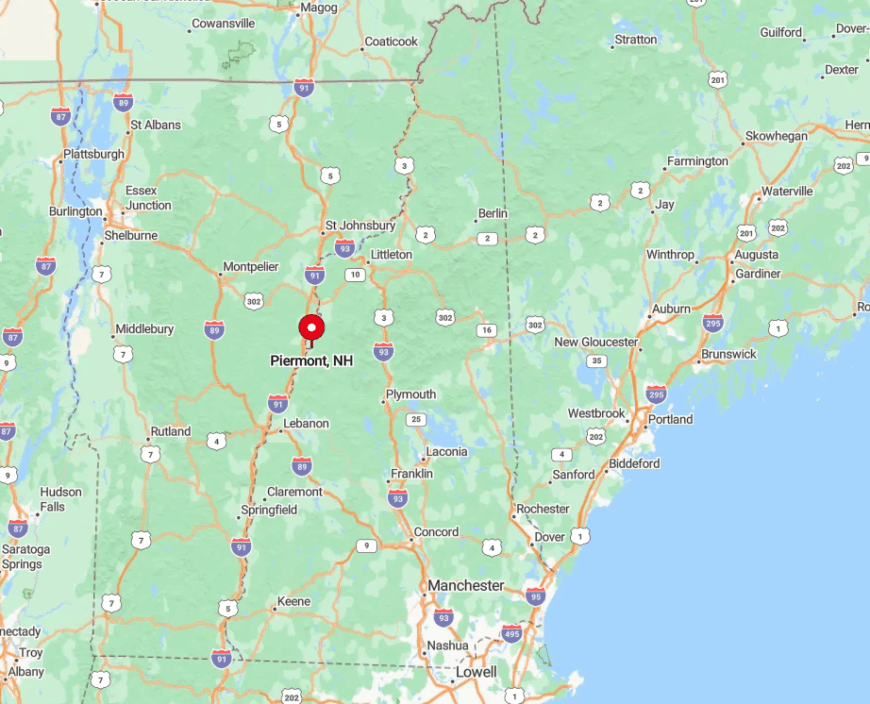
Piermont is situated in Grafton County, directly across the river from Bradford, Vermont. Its location along the river and the surrounding forests enhance its seclusion.
Access is primarily via Route 25 or Route 10, both of which offer scenic drives through rural landscapes. The town’s distance from major highways and urban centers contributes to its quiet, peaceful atmosphere.
6. Warren: Remote Living Near Mount Moosilauke
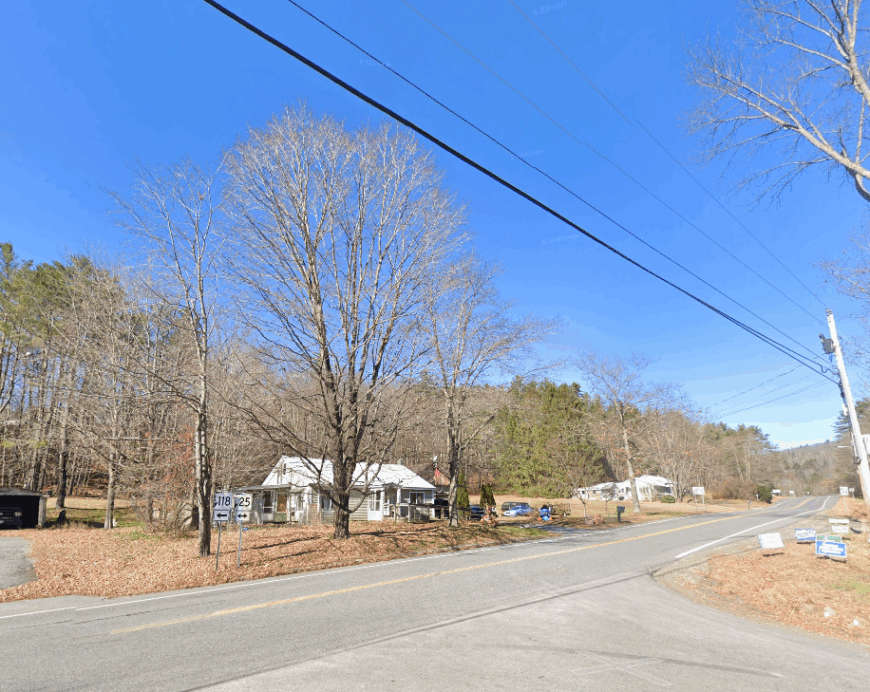
Warren boasts a population of approximately 900 people and offers remote living at the doorstep of Mount Moosilauke. I find the hiking here exceptional, with trails leading into the White Mountain National Forest.
The town lacks major industries, with local businesses catering to outdoor enthusiasts and residents. Bordered by national forest land, Warren provides ample privacy and minimal development, making it a secluded haven for nature lovers.
Where is Warren?
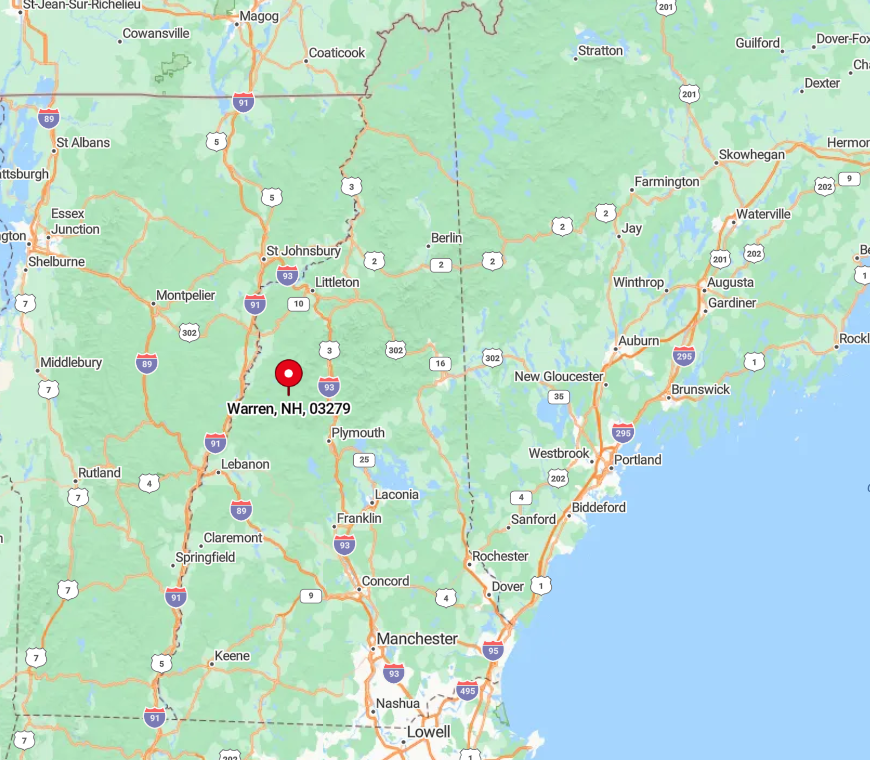
Located in Grafton County, Warren lies along Route 25, nestled between Wentworth and Piermont. Its seclusion is due in part to the extensive forested areas and mountains that surround it.
I usually access Warren via Route 25, enjoying the views of the mountains as I approach. The town’s remote location and natural barriers ensure a peaceful environment away from bustling cities.
5. Ellsworth: Hidden Away in Grafton County
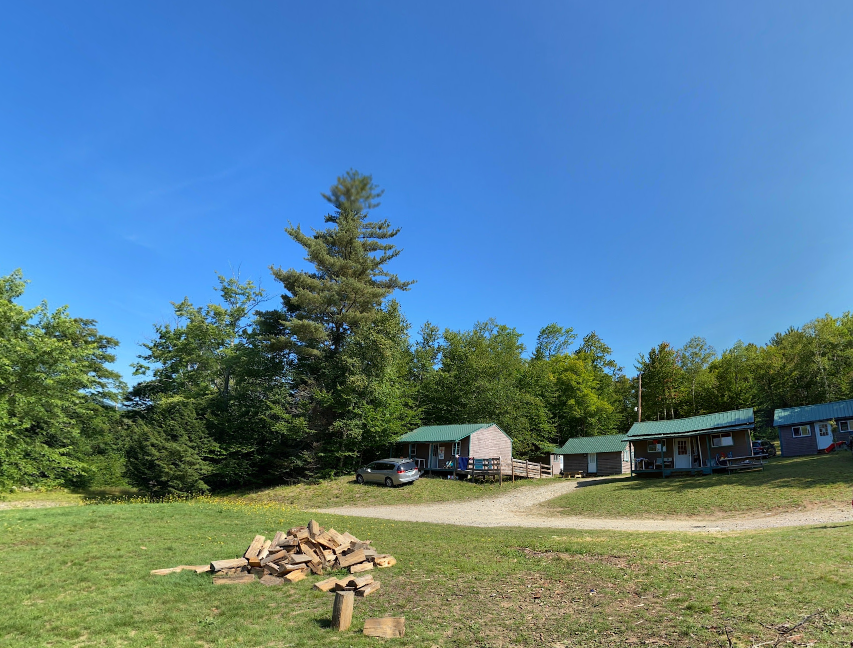
Ellsworth is one of the least populated towns in New Hampshire, with just around 90 residents. Despite its small size, the town offers vast open spaces ideal for hiking, wildlife observation, and simply enjoying solitude.
There are no significant industries, preserving its untouched landscape. Natural barriers like mountains and forests offer a quiet retreat away from urban life, which I find incredibly appealing when I need to disconnect.
Where is Ellsworth?
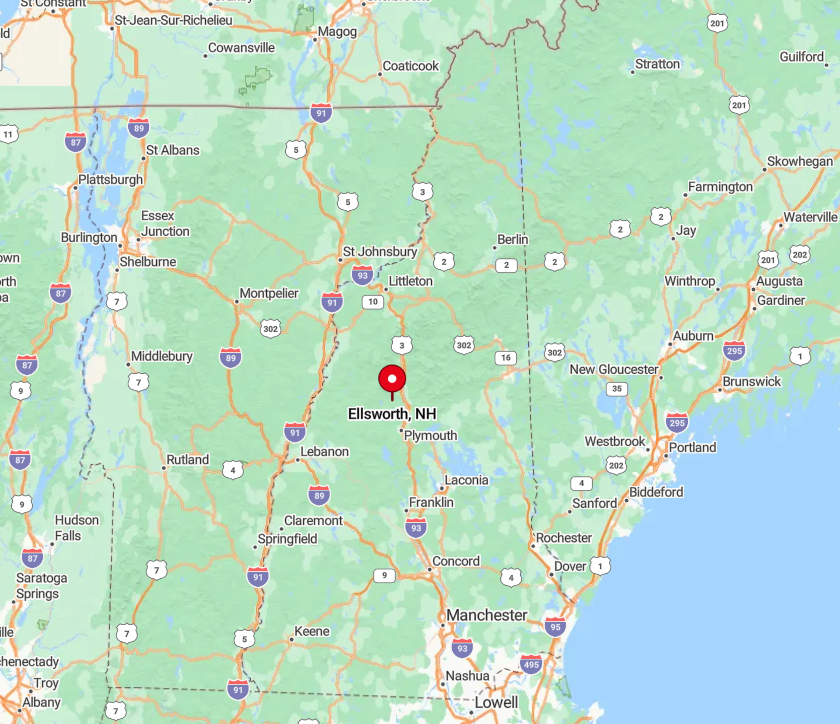
Ellsworth is tucked away in Grafton County, south of Thornton and west of Campton. Its hidden nature is enhanced by limited road access and the surrounding White Mountain National Forest.
Getting there often involves winding through back roads, which adds to the sense of adventure. The town’s isolation makes it a perfect spot for those seeking peace and solitude.
4. Easton: Seclusion in the Heart of the Mountains
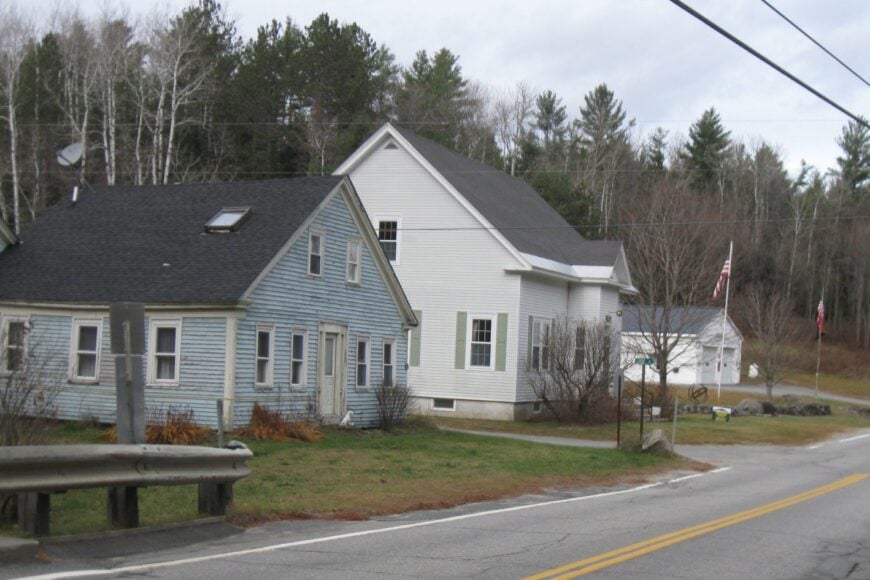
Easton, with a population of about 250, is enveloped by the stunning beauty of the White Mountains. I love hiking in the nearby Kinsman Range and exploring the serene forest trails.
Easton doesn’t have major industries, maintaining its quiet, residential character. Significant forested areas and the surrounding mountains ensure privacy and a deep connection with nature that I cherish every time I visit.
Where is Easton?
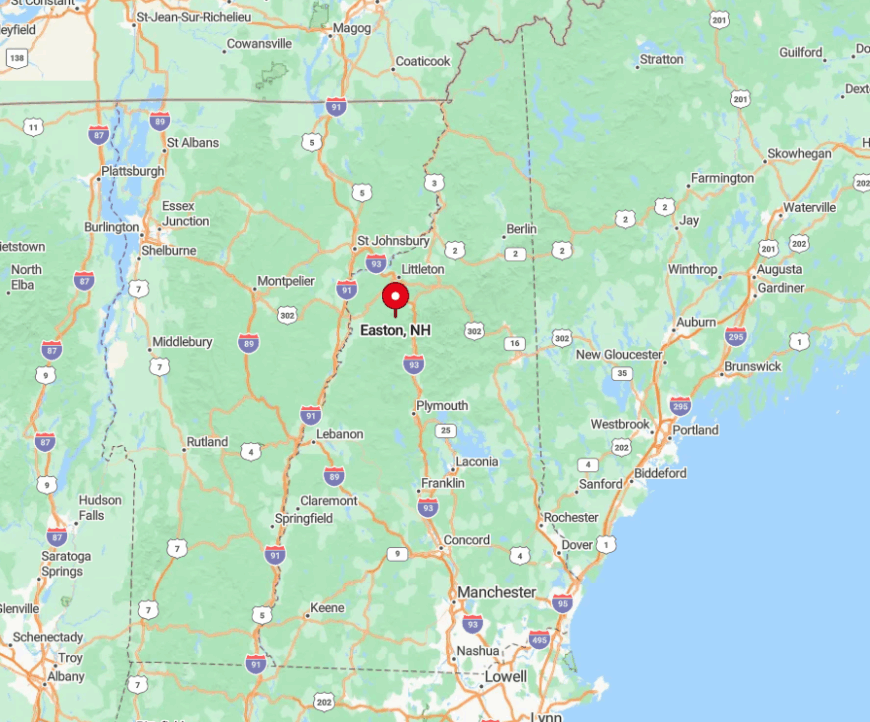
Situated in Grafton County, Easton lies southwest of Franconia and north of Woodstock. Its seclusion is due to its location within the mountainous region, away from major transportation routes.
I typically reach Easton via Route 116, which provides breathtaking views of the mountains. The town’s remote setting amid natural beauty makes it a haven for solitude seekers like me.
3. Lyman: Peaceful Living Amongst Nature

Lyman is home to around 550 residents and offers peaceful living amidst rolling hills and forests. Activities here include hiking, fishing in Ogontz Lake, and simply soaking in the tranquility.
The town’s economy is based on agriculture and small businesses. With large lot sizes and over 50% undeveloped land, Lyman provides a peaceful, low-traffic environment that feels like a world away from the hustle and bustle.
Where is Lyman?
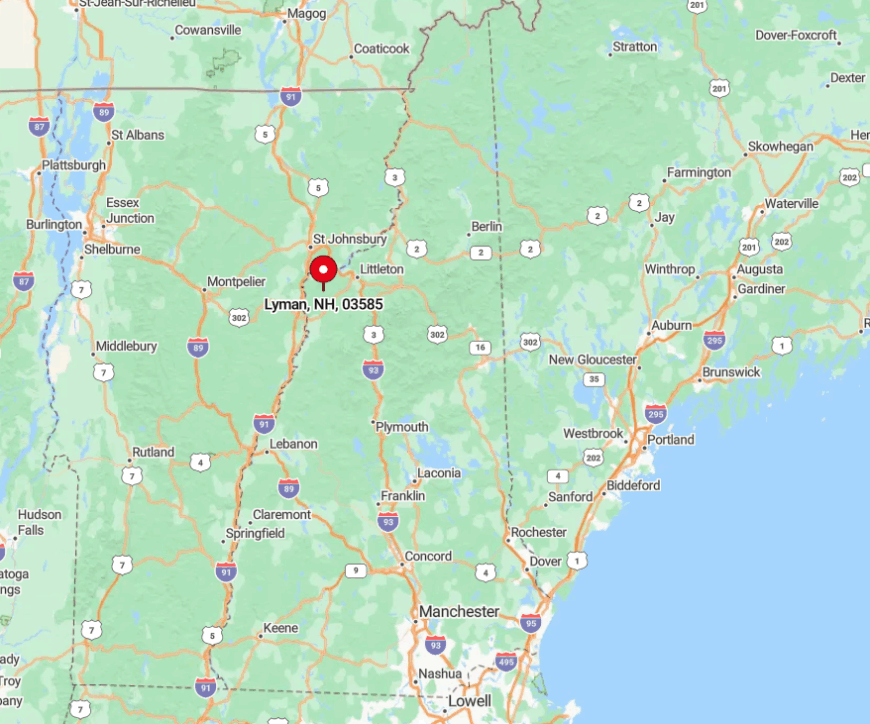
Located in Grafton County, north of Lisbon and west of Littleton, Lyman’s seclusion is enhanced by its remote location and lack of major highways. Accessing the town involves scenic drives through rural landscapes, which I find incredibly calming.
The natural barriers and expansive open spaces contribute to its serene and private atmosphere.
2. Landaff: Rural Serenity Off the Beaten Path
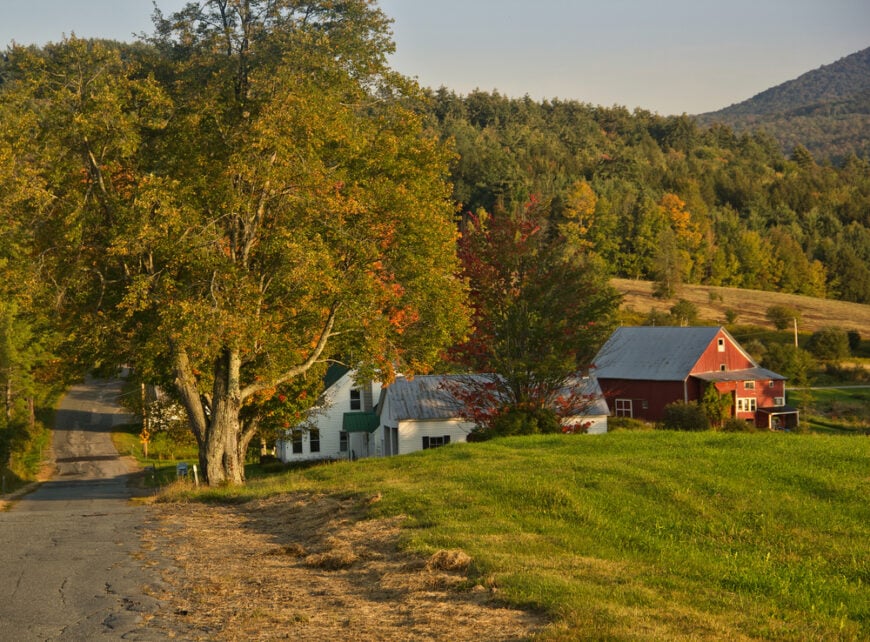
Landaff has a population of about 450 and is a quiet rural community surrounded by rolling hills and dense forests. I enjoy the simple pleasures here, like visiting local farms and exploring country roads.
There are no significant industries, keeping the town’s environment peaceful and unspoiled. Its location miles away from urban centers and major roads ensures that Landaff remains a secluded spot perfect for relaxation.
Where is Landaff?
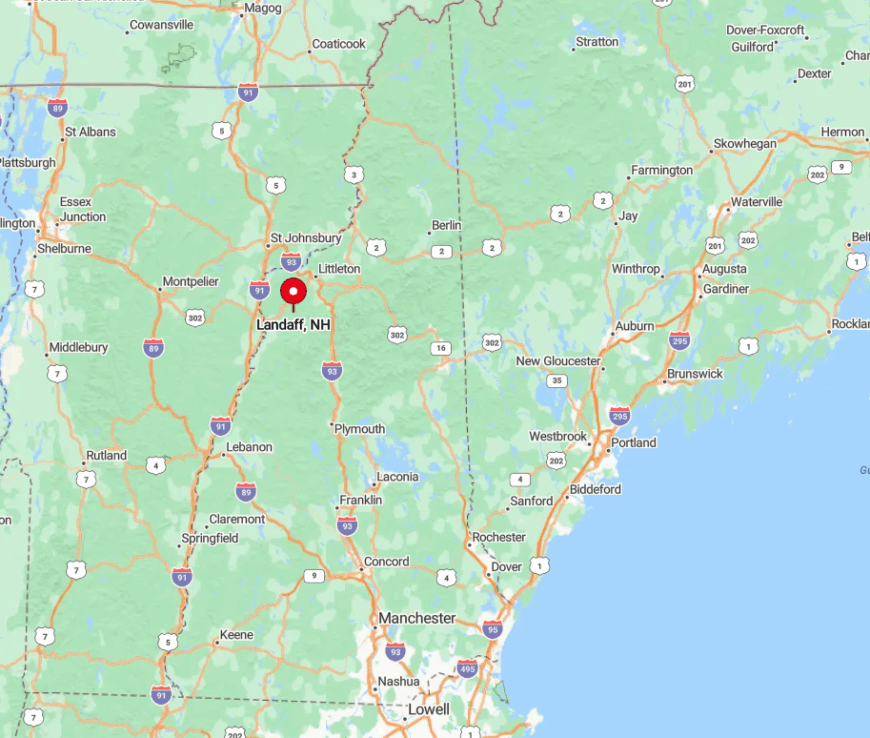
Situated in Grafton County, Landaff lies east of Bath and west of Lisbon. Its off-the-beaten-path location, without major highways nearby, enhances its tranquility. I usually reach Landaff via smaller county roads, which adds to the sense of escape.
The town’s rural setting and natural surroundings make it an ideal spot for those seeking solitude.
1. Benton: Hidden Gem Amid the White Mountains
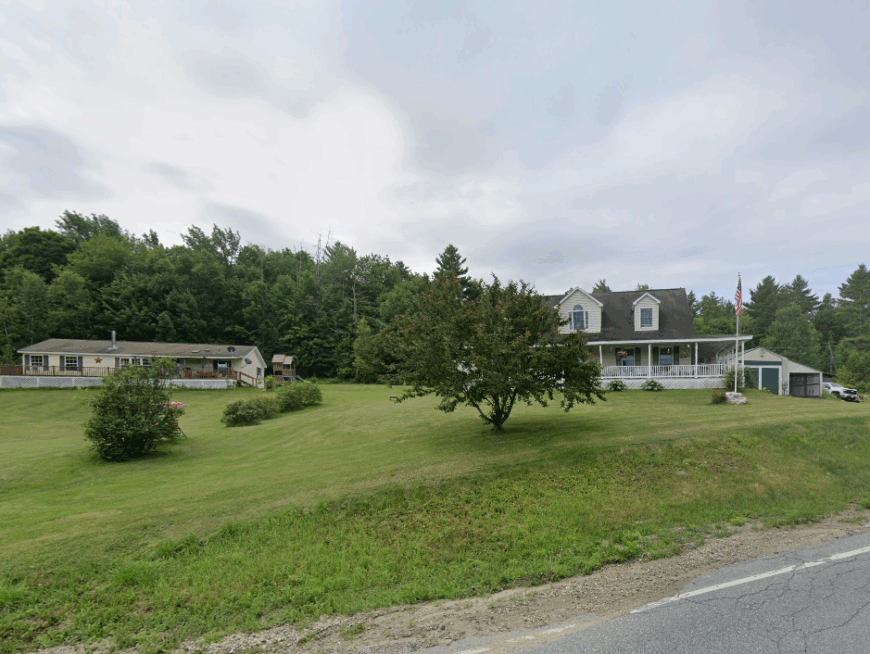
Benton is a hidden gem with a population of just over 360 residents. Nestled in the White Mountains, it’s an ideal spot for hiking, especially on the Appalachian Trail that passes through town.
There are no major industries, preserving its pristine natural environment. Benton’s low population density and expansive natural barriers offer ultimate privacy, making it one of the most secluded places I’ve ever explored.
Where is Benton?
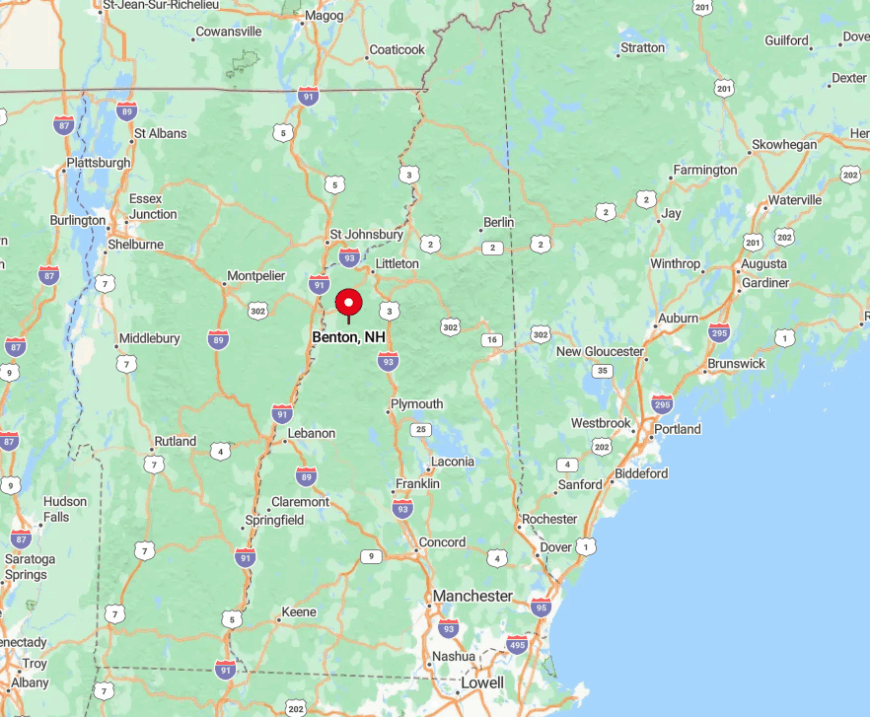
Located in Grafton County, Benton lies west of Woodstock and south of North Woodstock. Its seclusion is amplified by the surrounding White Mountain National Forest and the absence of major roadways.
Accessing Benton often involves winding through mountain roads, which I find both exciting and calming. The town’s remote location amidst the mountains provides a perfect getaway for those looking to immerse themselves in nature.





